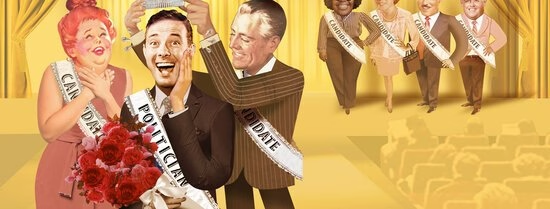Economic research has documented that physically attractive people enjoy benefits in many areas of life, such as higher salaries and easier access to cheap loans. Such a beauty premium even occurs when we elect our political leaders. In this research, we find that beauty indeed matters in plurality election systems, but not in proportional-representation ones. Once elected, better-looking politicians exploit their beauty premium to reap some independence from their parties. Political parties, however, do not seem to exploit their beauty capital in a strategical manner.
‘Rationally ignorant voters may consciously or unconsciously look for cheap cues that indicate candidate competence.'
Elections can suffer from a beauty bias: A vast majority of the electorate shows little interest in political affairs. Moreover, the nature of elections leaves voters with the perception that their individual influence on election outcomes is virtually zero. These features induce many voters to remain ‘rationally ignorant’ about the alternative candidates’ or parties’ agendas. Rationally ignorant voters may consciously or unconsciously look for cheap cues that indicate candidate competence. Earlier research has revealed that attractive people are perceived to be more competent than less attractive people. It therefore seems reasonable to assume that many voters are beauty biased.
Plurality versus proportional representation elections
Whether physical attractiveness actually translates into electoral success, however, depends on the specifics of the election system. For our research, we exploit a unique setting of the German federal elections. Germany features a mixed election system that combines two widely used elections systems in one round of voting by the same electorate. One vote is cast for a party (proportional representation tier) and another for a candidate from the respective electoral district (plurality tier).
The electoral success of candidates in the plurality tier depends on attracting the most votes in their respective district. They are highly visible to the electorate because they are used as crowd pullers by their parties and placed on campaign posters.
Candidates running in the proportional representation tier are much less visible. Their prospects of being elected depends on how high-up they are placed on the party state-list, on the share of votes obtained by their party, and on how many candidates of their party are elected through the plurality tier. Advertising themselves as individual candidates thus does not help them in their bid for election and the electorate is less aware of their looks.
Beauty in German federal elections
To assess whether beauty matters in these two election systems, we collected pictures of German politicians. We asked American survey respondents to rate the attractiveness of these politicians on a scale from one (not at all attractive) to ten (highly attractive) and used these ratings to calculate beauty scores. It turns out that the average German politician would not end up in the finals of a beauty pageant: on average, our raters give them a score of 4.36.
Our finding is that the two election systems indeed differ in their ability to neutralise the beauty bias. The beauty scores of list candidates do not predict a party’s vote share in the proportional representation tier. However, in the plurality tier we do find a positive and significant influence of beauty on vote shares.
Capitalising on beauty
‘A higher beauty score predicts that a politician will vote against the party line more often.'
In principle, this would allow political parties in Germany to maximise their seats in parliament by placing attractive candidates in contested districts where election results were close in earlier elections. That is how parties tend to distribute their financial resources. However, they do not seem to exploit their beauty capital in the same way. While we do find candidates in the plurality tier to be more attractive than their peers in the proportional representation tier, the most attractive candidates are found in safe districts that the party has repeatedly won in earlier elections. This is likely a consequence of the decentralised and federalist organisation of German parties which makes switching candidates between districts difficult. With that, it prevents parties from exploiting the “beauty premium” by replacing less with more attractive candidates in contested districts.
The effect of beauty does not end after the election. To study this, we collected politicians’ voting behaviour during roll-call votes in parliament. We find that a higher beauty score predicts that a politician will vote against the party line more often – but only for parliamentarians from the plurality tier.
Beauty matters in politics. In candidate-centered plurality election systems, beauty seems to allow politicians to stick to their own political agenda even if it does not line up with party interests. However, election outcomes can be beauty biased. The choice of election system is one measure and a federalist party structure another that helps to alleviate beauty-biased election outcomes.
Marcus Rösch
Marcus Rösch is a PhD candidate at the Department of Applied Economics of Erasmus School of Economics. His current research focuses on multinational investments and the labour market.
The research is based on joint work: Potrafke, N., Rösch, M., & Ursprung, H. (2020). Election systems, the “beauty premium” in politics, and the beauty of dissent. European Journal of Political Economy, 64, 101900.
- PhD student
- More information
This item is part of Backbone Magazine 2021. The magazine can be found in E-building or Theil-building for free. Additionally, a digital copy is available here. Backbone is the corporate magazine of Erasmus School of Economics. Since 2014, it is published once a year. The magazine highlights successful and interesting alumni, covers the latest economic trends and research, and reports on news, events, student and alumni accomplishments.

